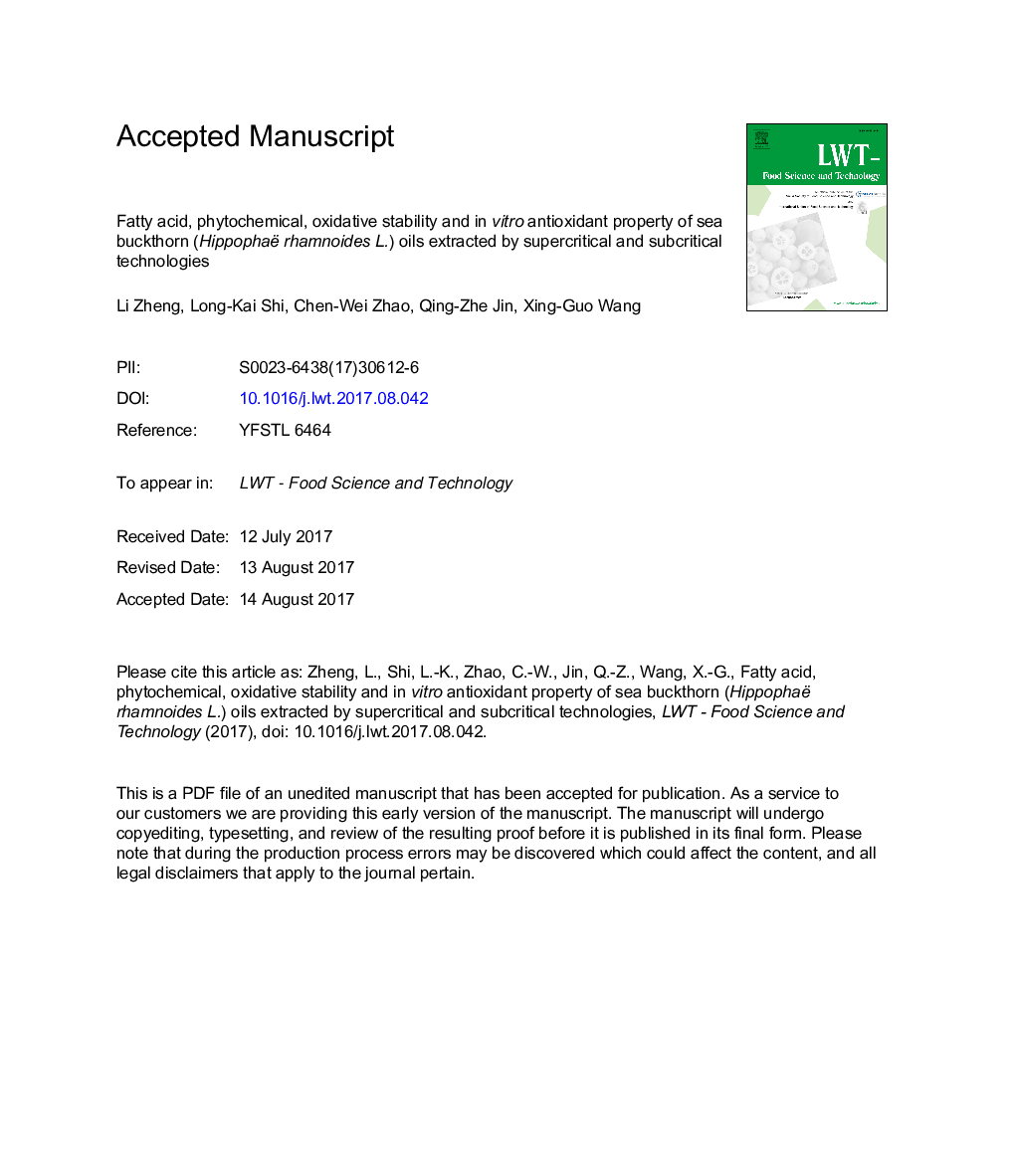| Article ID | Journal | Published Year | Pages | File Type |
|---|---|---|---|---|
| 5768715 | LWT - Food Science and Technology | 2017 | 28 Pages |
Abstract
Sea buckthorn (Hippophaë rhamnoides L.) oils (SBO) are widely used in food, medicinal and cosmetic industries, but comprehensive study of their lipid characteristic (fatty acid, tocopherol/tocotrienol, phytosterol, flavonoid, carotenoid, polyphenol), oxidative stability and free radical scavenging capacity are few. In the present study, above profiles of four SBO obtained from SB pulp and seed by using supercritical and subcritical technologies were investigated and compared. The distributions of fatty acids in the SB pulp oils (C16:1, C16:0 and C18:1 (n9)) and seed oils (C18:2, C18:3 and C18:1 (n9)) showed significant difference (PÂ <Â 0.05). Further, SB pulp oils showed higher flavonoid, carotenoid, polyphenol contents and oxidative stability, whereas, SB seed oils expressed higher tocopherol/tocotrienol, phytosterol contents and free radical scavenging ability.
Keywords
Campesterol (PubChem CID: 173183)Palmitoleic acid (PubChem CID: 445638)Gamma-Tocopherol (PubChem CID: 92729)β-sitosterol (PubChem CID: 222284)Oleic acid (PubChem CID: 445639)Linoleic acid (PubChem CID: 5280450)Palmitic acid (Pubchem CID: 985)Fatty acidFree radical scavenging capacityOxidative stability
Related Topics
Life Sciences
Agricultural and Biological Sciences
Food Science
Authors
Li Zheng, Long-Kai Shi, Chen-Wei Zhao, Qing-Zhe Jin, Xing-Guo Wang,
